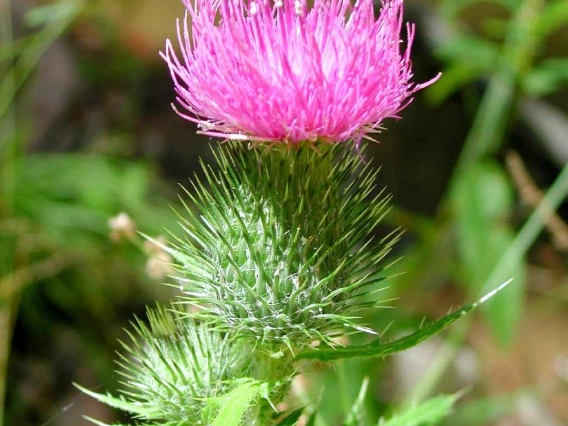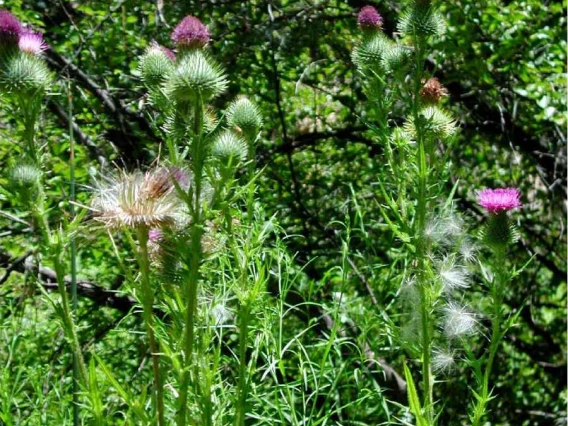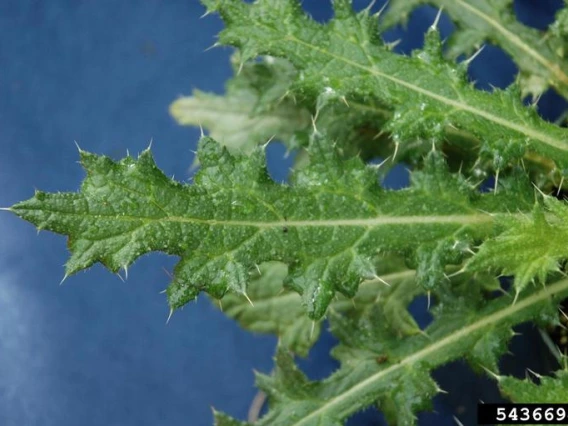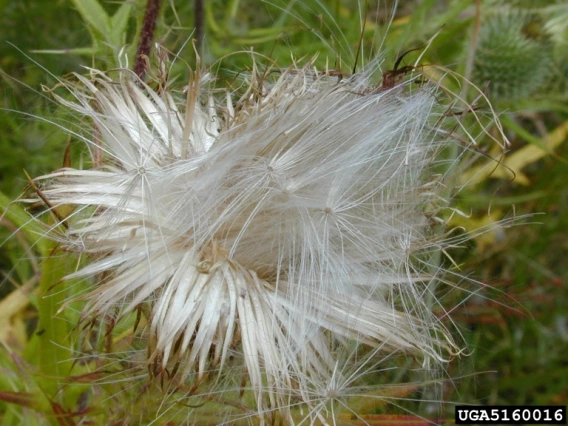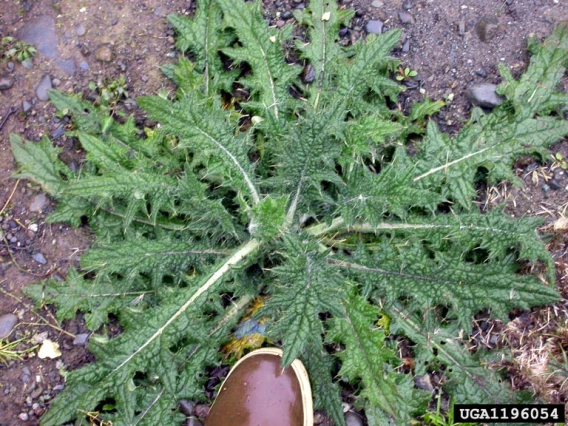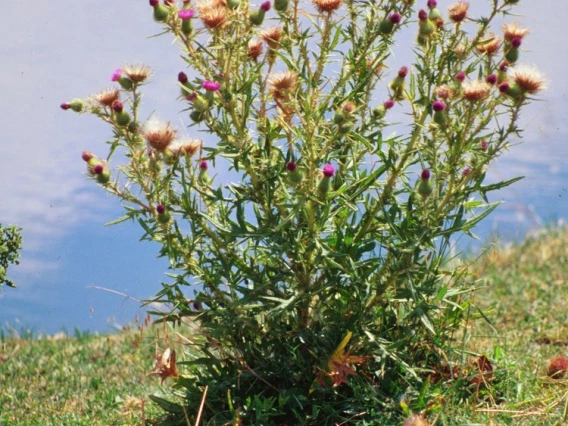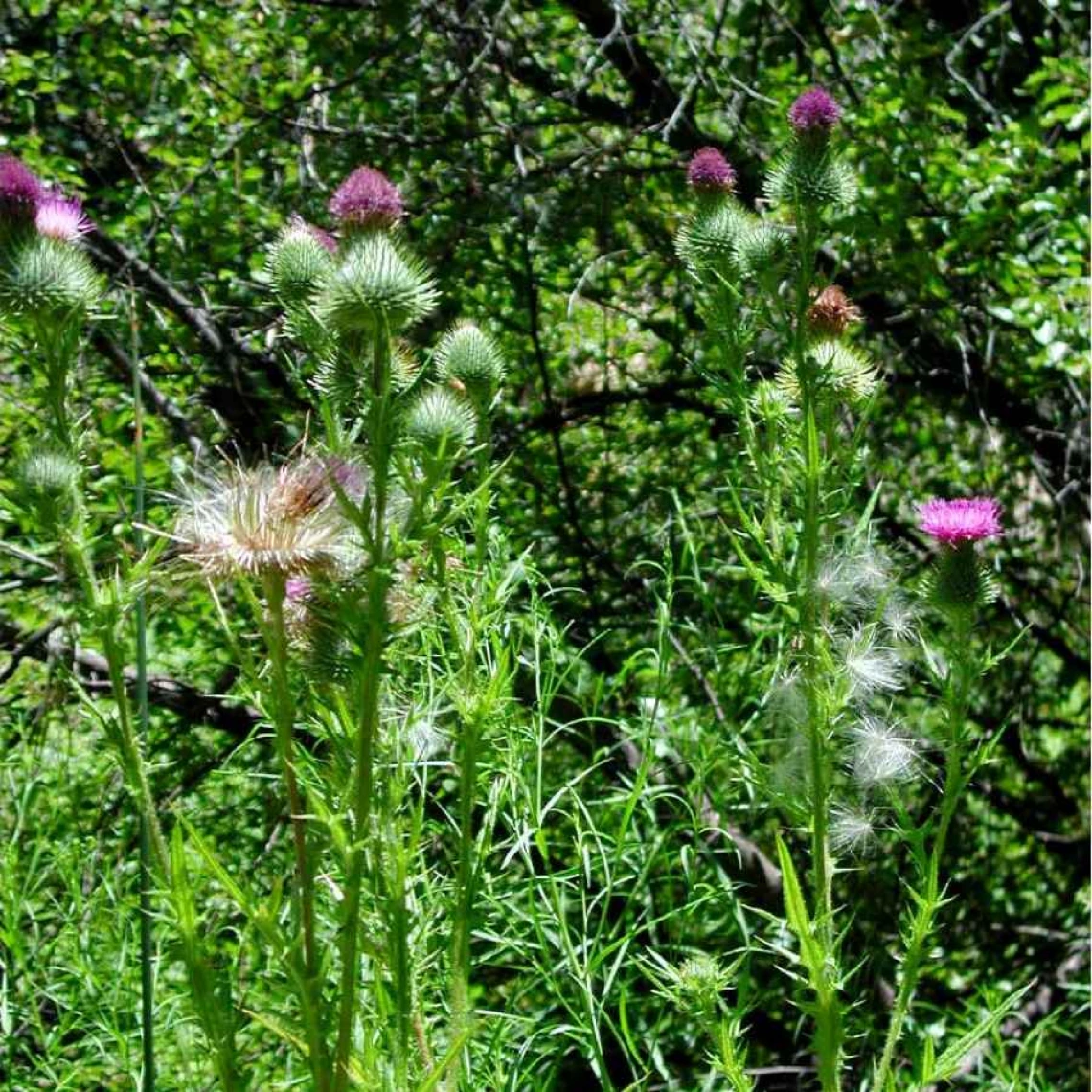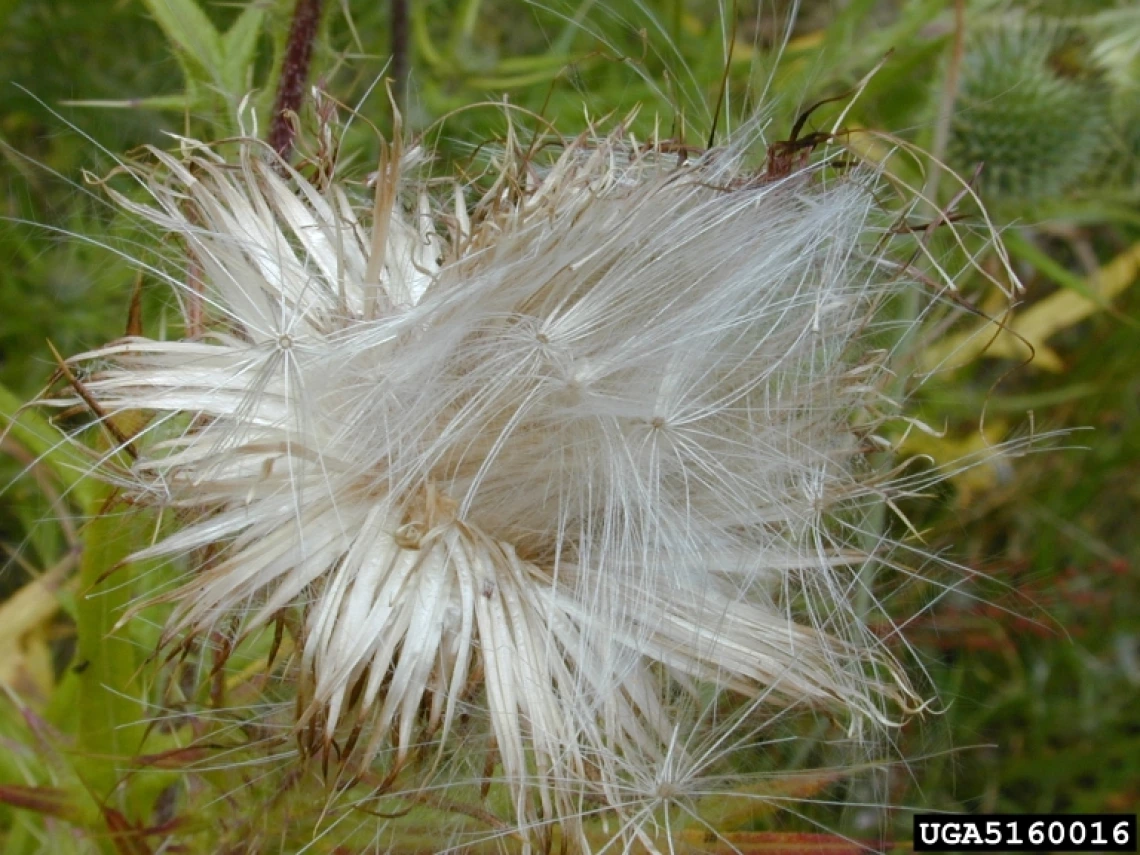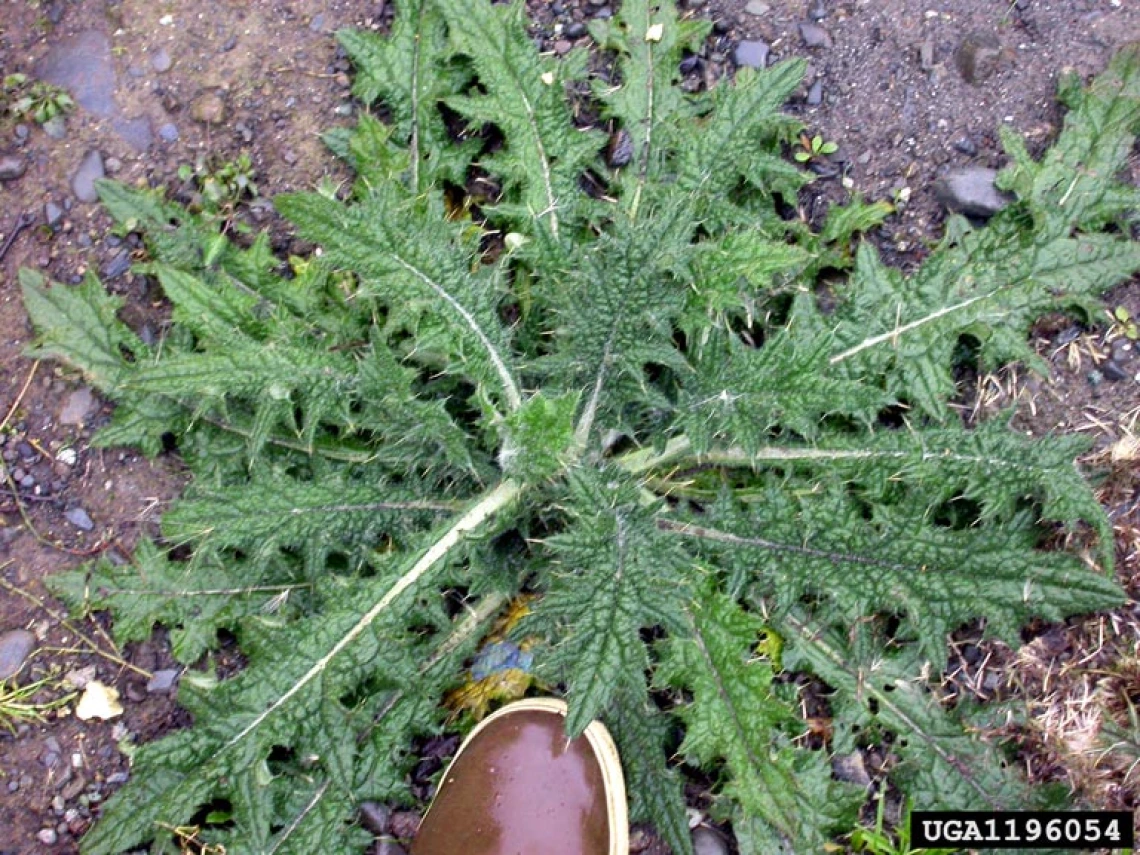Image
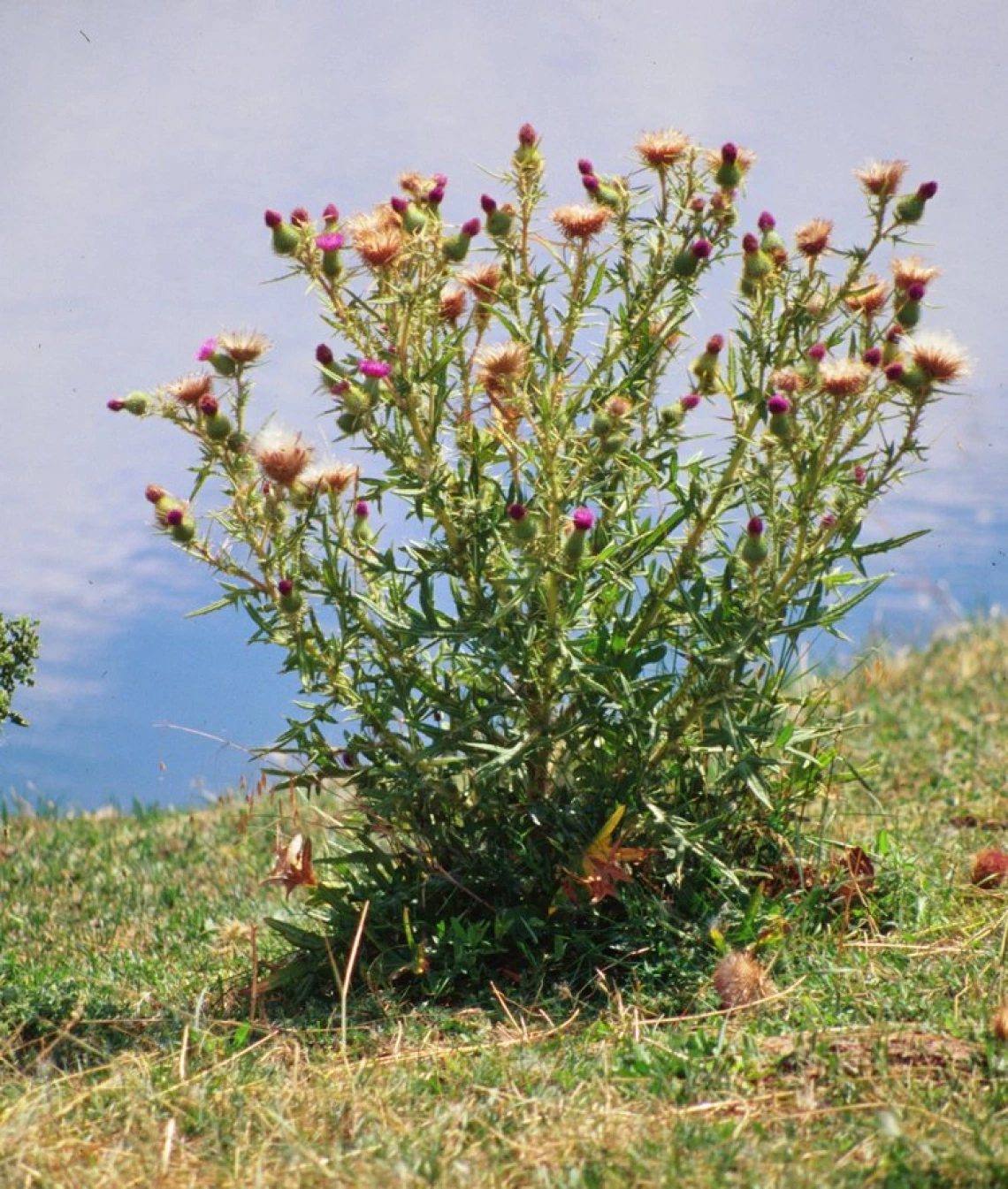
Bull thistle
Steve Dewey, Utah State University, Bugwood.org
Common Name(s)
Bull thistle
Spear thistle
Scientific Name
Cirsium vulgare
Family
Sunflower or Aster family (Asteraceae)
Reasons for concern
This aggressive and persistent species can quickly take over both disturbed and unattended areas, and outcompete native species, reducing plant diversity and wildlife habitat. It can form huge monocultures and is very difficult to eradicate. Thistle seed is easily dispersed by wind, water, birds, and other animals.
Classification
Non-native. Categorized as a Class B noxious plant on the Arizona Noxious Weed list, meaning that it “may be a high priority pest for quarantine, control, or mitigation if a significant threat to a crop, commodity, or habitat is known to exist.”
Botanical description
Tall, sturdy, very spiny plant with many branching stems.
Leaves
Rosette leaves deeply lobed, dark green, prickly and spiny on top, cottony underneath, 2 to 10 inches long or even longer, with a raised center vein. Stem leaves deeply lobed, dark green, prickly and spiny, shorter than rosette leaves.
Stem(s)
Has very spiny wings, each extending down the stem from a leaf. Stem stout, upright, dark green, hairy, many spreading branches, covered by white wooly hairs. Stems up to 2 to 6 feet. Dead stems remain through winter.
Flowers
Large, purple, solitary flower heads, clustered at end of each branch. Flower heads are supported by very spiny, pointed, green modified leaves, called bracts. Blooms June through October.
Seeds
Seed heads topped by plume of feathery white hairs. Seeds are short-lived, particularly those on or near soil surface. Seeds buried 5 or 6 inches in soil may remain viable up to 3 years.
Roots
Short, fleshy, slightly branched, short-lived taproot.
Native to
Europe, western Asia, North Africa
Where it grows
Fields, pastures, wastelands, roadsides. Generally likes sun and moist areas. Does not tolerate shade. Elevation 4,200 to 9,000 feet.
Lifecycle
Biennial. Basal rosette forms the first year. Bolts, flowers, and dies in the second year.
Reproduction
By seed
Weedy Characteristics
Bull thistle is highly competitive and aggressive, and forms dense colonies that choke out native vegetation important to wildlife and pollinators. Seeds germinate rapidly and are spread by wind. An individual plant can produce up to 100,000 seeds.
Look-alike Plants
Image
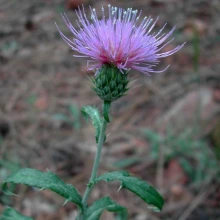
Wheeler thistle
Max Licher, swbiodiversity.org/seinet
Many native thistles can look similar to bull thistle. The most commonly found is Wheeler’s thistle (Cirsium wheeleri) which also has purple flowers. Wheeler’s thistle plants are shorter and smaller with more delicate stems and rosettes. The stems do not have spiny wings and therefore can be easily touched. The leaves are not covered in bristles or bumps like bull thistle.
Control Strategies
Eradicate them in rosette stage in the first year whenever possible. In the second year, do not let them go to flower or seed. To prevent resprouting, cut taproot about 2 to 3 inches below soil surface, while disturbing soil as little as possible. Bag all buds, flowers or seeds. Always use gloves. Repeatedly monitor previous infestations for new growth. Plant desirable native species to outcompete invasive plants. Chemical control can be effective on rosettes. Contact your local county extension office for more information on chemical control.
References
- Bull thistle Washington State Noxious Weed Control Board
- A Northern Nevada Homeowner’s Guide to Identifying and Managing Bull Thistle University of Nevada Cooperative Extension
- Field Guide for Managing Annual and Biennial Invasive Thistles in the Southwest USDA Forest Service Southwestern Region

